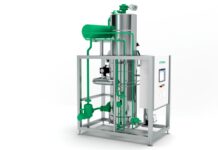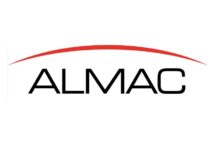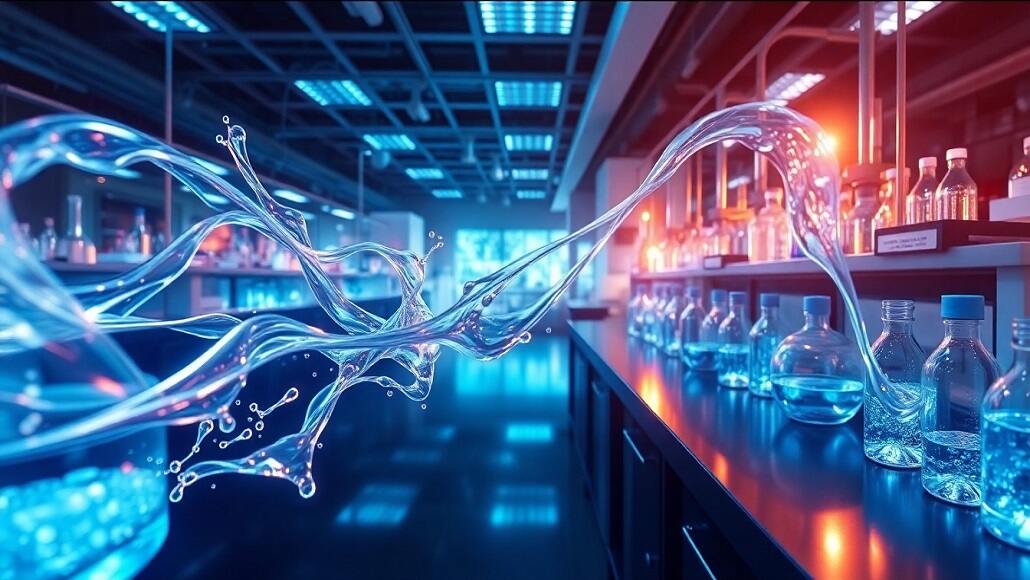In the high-stakes arena of biomanufacturing, where tiny contaminants can have macroscopic effects, the idea of fluid channel integrity has developed from an operational need into a vital pillar of product assurance.┬Ā Maintaining an uncompromised fluid path from upstream processing through to final fill and finish determines the pursuit of purityŌĆöwhether in monoclonal antibodies, vaccines, cell treatments, or biologics.┬Ā This invisible but essential infrastructure is not only about connecting pipes or tubes; it is about ensuring an aseptic, contaminant-free environment that guarantees the biological product stays unmodified and therapeutically active.
Ensuring the integrity of the fluid flow has become both a scientific and engineering problem as regulatory standards tighten and biologics get more complicated.┬Ā It calls for a coordinated ecosystem of design accuracy, materials science, real-time monitoring, and validation procedures all working together to safeguard the product from microbial entry, particles, extractables, leachables, or system failures in addition to strong hardware.
The Anatomy of a Fluid Path
A fluid path in biomanufacturing is the whole enclosed pathway comprising tubing, connectors, filters, valves, pump heads, sensors, single-use bags, bioreactors, and filling systems through which process fluids or products pass.┬Ā This path is meant to be closed and sterile, therefore it reduces the possibility of contamination during processing.
Traditionally, stainless steel systems ruled this area, but with the advent of single-use technologies (SUTs), fluid paths are more and more constructed of polymers and elastomers designed for bio-compatibility and integrity under stress conditions including pressure, temperature changes, and chemical exposure.
| Component | Function in Fluid Path | Common Risks to Integrity |
| Tubing & Connectors | Transport and connection of media/products | Microtears, detachment, compatibility |
| Filters | Sterile filtration, virus removal | Clogging, rupture, pore-size inconsistency |
| Single-use Bags | Media storage, transport, mixing | Punctures, seal failures, leachables |
| Pumps & Valves | Fluid transfer, flow control | Backflow, seal integrity loss |
| Sensors & Monitoring Ports | Process control, data acquisition | Intrusion points, miscalibration |
Why Fluid Path Integrity Matters More Than Ever
The purity of a biologic product is not simply a quality criterion but a patient safety requirement in a time of individualised treatments and fast development schedules.┬Ā Even at undetectable levels, pollutants can cause immunological reactions, reduce effectiveness, or jeopardise whole batches, therefore causing expensive recalls or delays.
Furthermore, the margin for physical or chemical interference is narrowing as treatments more and more include live cells or delicate proteins.┬Ā Fluid route breaches can bring not just microbiological contamination but also particles, leachables, or even oxygenŌĆöall of which could harm the product or change its behaviour.
Fluid path integrity, therefore, plays a critical role in ensuring:
- Sterility Assurance: Every point along the fluid stream must prohibit bacterial entrance, hence sterility assurance depends on this.┬Ā Aseptic design and testing guarantee that no organisms enter the process, hence protecting the product from contamination during manufacturing and packing.
- Product Consistency: A consistent and predictable environment guarantees that every production batch produces the same quality and composition.┬Ā From raw ingredients to final fill, consistent fluid conditions maintained throughout the process determine this consistency.
- Regulatory Compliance: Regulatory bodies like the FDA, EMA, and many national health authorities are always honing good manufacturing standards (GMP).┬Ā Meeting these rules calls for an unbroken fluid channel; approval usually depends on documentation of integrity.
- Operational Safety: Material failures or leaks not only degrade product quality but can endanger facility operators.┬Ā High-pressure or hazardous fluid leaks can lead to exposure events, so mechanical integrity is crucial for worker protection.
Testing and Validation of Fluid Path Integrity
Integrity is guaranteed via a thorough design and then validated and in-process checked.┬Ā A fluid path’s uncompromised status is confirmed by several important tests:
- Pressure Decay Testing
This is done by shutting off a system and applying pressure; then, over a specified time, one monitors for any drop.┬Ā Leakage is indicated by a notable pressure drop.┬Ā Its dependability and non-invasiveness make this approach popular for filters and single-use bag testing.
- Helium Leak Testing
This method is very sensitive and can find very tiny leaks that might not be clear under pressure drop by using helium’s small molecular size and inert character.┬Ā Often used in high-risk regions like final fill to guarantee sterility assurance.
- Visual Inspection & Dye Penetration
Operators visually inspect tubing, welds, and seals for indications of damage.┬Ā Dye penetration tests load the system with a coloured liquid under pressure and look for any dye escape, suggesting micro-perforations or seam failures.
- Real-Time Sensors and IoT Monitoring
Digital transformation has attained fluid path integrity.┬Ā Sensors now monitor pressure, temperature, and flow in real-time.┬Ā Any departure from the baseline may be highlighted right away, so enabling teams to act before the problem gets worse.
Material Science and Compatibility
The material used in construction is among the most important factors affecting fluid path integrity.┬Ā In single-use systems, polymers have to be inert to process fluids under different pH and temperature conditions and balance flexibility with mechanical strength.
Key material considerations include:
- Extractables and Leachables (E&L): Every part in contact with the product has to be evaluated for possible chemical substances that could leach into the fluid.┬Ā Product purity depends on this since such leachables can compromise therapeutic action or biological stability.
- Gamma Irradiation Stability: Many single-use systems are gamma irradiated to sterilise them.┬Ā The selected material has to keep structural and chemical integrity following exposure; it cannot degrade or create reactive by-products.
- Biocompatibility: Materials should not cause any poisonous, allergic, or immunogenic reaction in the final product.┬Ā Qualifying material appropriateness for biologics requires testing for cytotoxicity, endotoxin levels, and reactivity.
Integrity Across the Manufacturing Lifecycle
Fluid route integrity has to be preserved not only during manufacturing but also during the whole lifecycleŌĆöfrom procurement to installation, operation, and final decommissioning or disposal.
Key lifecycle checkpoints include:
- Supplier Qualification: Component suppliers have to be audited and qualified depending on their capacity to deliver consistent, traceable, verified materials.┬Ā The qualification consists of reviewing documentation, lot records, and batch testing.
- Assembly Validation: When fluid routes are assembledŌĆöespecially for single-use systemsŌĆöwelding, sealing, and connection integrity must be verified under simulated process conditions.┬Ā This covers fluid exposure, pressure, and stress.
- Pre-Use Integrity Testing: Systems undergo leak tests or functional validation to guarantee no harm happened during transport or handling before starting a production batch.
- Post-Use Analysis: Disassembled parts can be examined for wear patterns, corrosion, or damage after a run.┬Ā This data informs preventive maintenance plans and ongoing development.
Trends Driving Higher Expectations in 2025 and Beyond
Recent market shifts are accelerating innovation in fluid path design and validation. Three major trends are shaping the next generation of integrity assurance:
- Shift Toward Modular and Flexible Manufacturing
Agile production lines, especially for small-batch or customised biologics, are driving need for rapid reconfiguration and standardised, tested components.┬Ā These systems call for pre-tested sterile and dependable quick-connect fluid routes.
- Rise of Real-Time Integrity Monitoring
Manufacturers are inserting miniaturised sensors straight into pipes and connections.┬Ā These sensors in real-time identify flow anomalies, pressure drops, or pollution markers, hence enabling predictive maintenance and error-proofing.
- Increased Regulatory Focus on Leachables
Global authorities are raising standards on long-term stability and the possibility for extractables and leachables to compromise product safety.┬Ā Manufacturers have to do thorough long-term risk assessments and compatibility research.
Case Illustration: Final Fill & Finish
Among all stages in biomanufacturing, final fill and finish is the most susceptible to integrity breaches due to its proximity to the end product and typically lower intervention tolerance.
HereŌĆÖs a simplified risk comparison:
| Risk Parameter | Upstream Bioreactor | Final Fill Station |
| Microbial Risk | Moderate | High |
| Physical Stress | High | Low |
| Operator Interaction | Low | High |
| System Complexity | Moderate | High |
Often, this stage depends on pre-sterilized fluid routes with redundant integrity checks, including dual filters, barrier isolators, and post-assembly helium testing.┬Ā A breach here could cause complete batch loss, thereby making the design and validation of this fluid channel mission-critical.
Looking Ahead: Design for Integrity
The future of fluid path integrity lies in proactive design and digital integration. Emerging best practices include:
- Integrity-by-Design Principles: Systems are built with fail-safes like double-welded seams and contamination traps to prevent problems before they occur.
- Digital Twins of Fluid Paths: Virtual simulations model system behaviour under pressure, heat, or chemical conditionsŌĆöidentifying weak points before the system enters into service.
- Smart Single-Use Systems: Components increasingly come equipped with RFID chips or QR codes to guarantee traceability, compliance tracking, and even real-time expiration certification.
Conclusion
The integrity of the fluid path has become more than just a technical need as biomanufacturing enters an era characterised by precision, agility, and patient-centricity; it is the silent defender of product purity.┬Ā Every bag, tube, valve, and filter carries not only liquid but also the weight of safety, efficacy, and trust.
Ensuring fluid channel integrity is now a matter of strategic thinking rather than routine maintenance.┬Ā A dedication that guarantees not only the biologic but also the patient waiting for it calls for investment in modern materials, smart systems, and strong validation procedures.



















